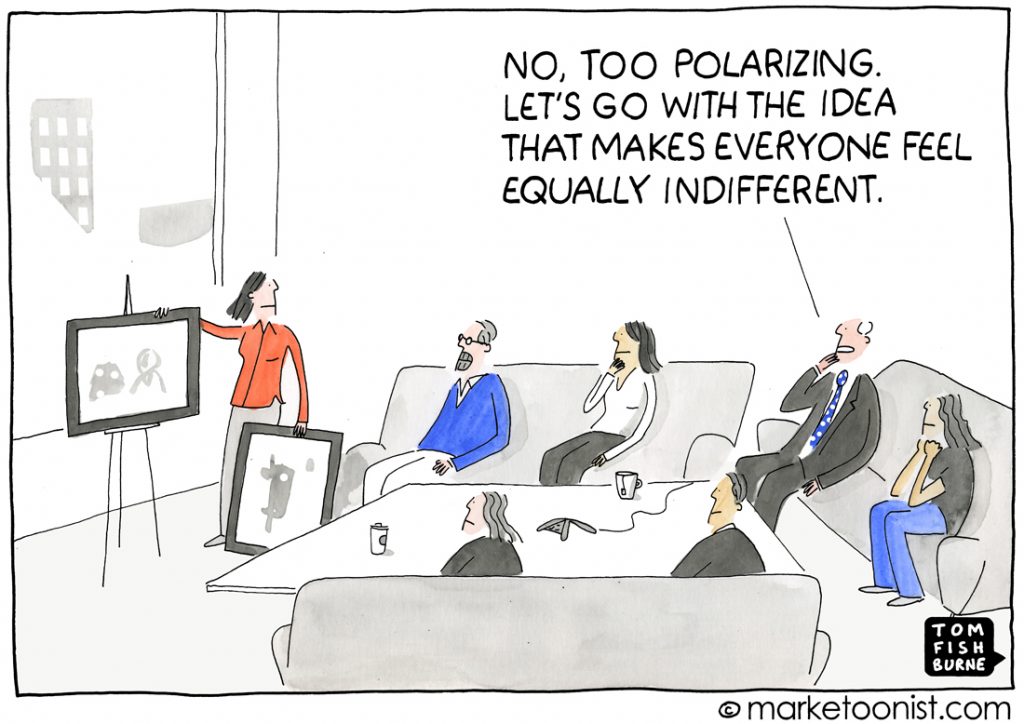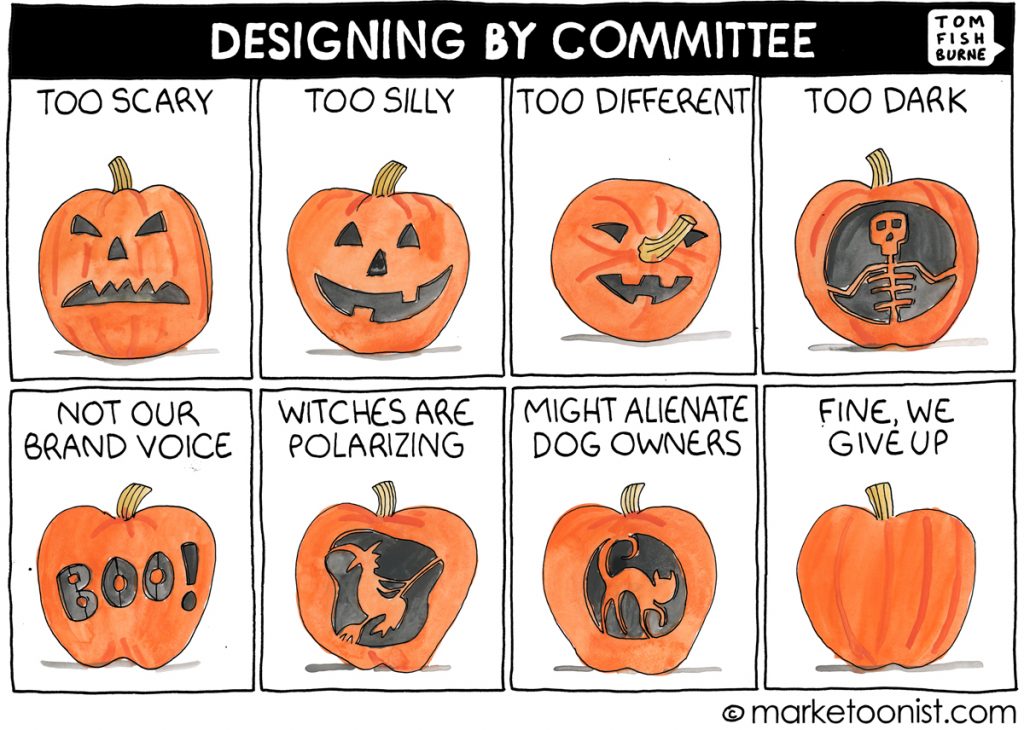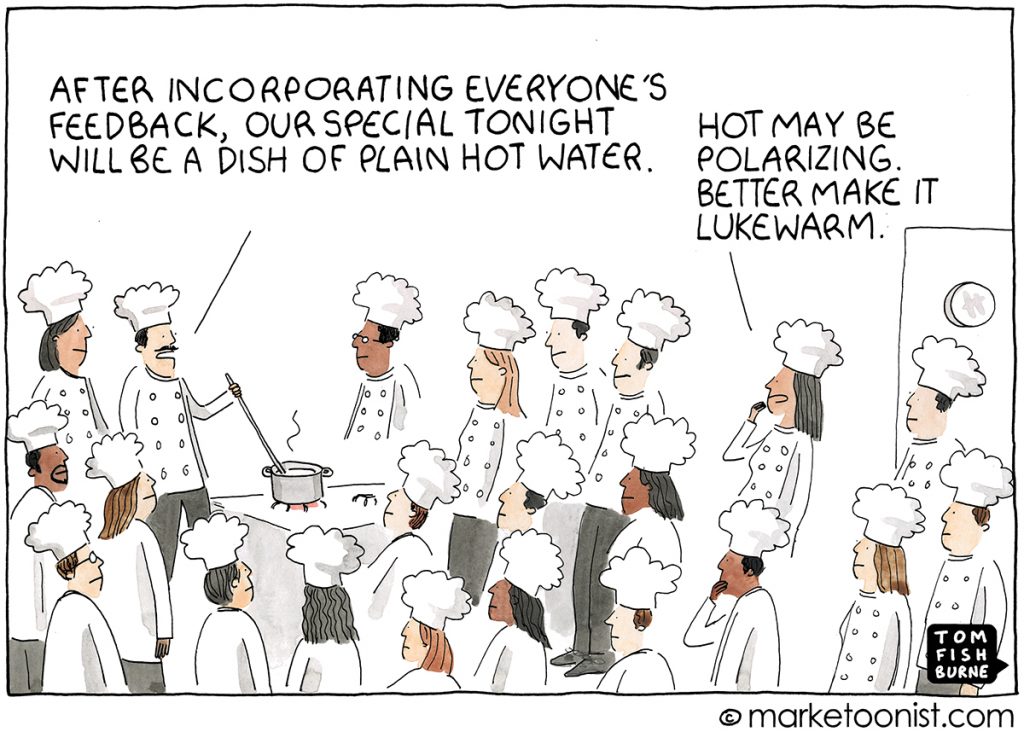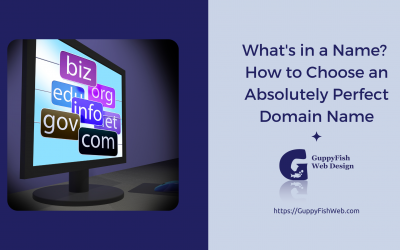Earlier today, I made applesauce with my child. I peeled, cored and sliced the apples, then passed them to her. At that point, she used a “safe” knife to cut the slices into smaller diced pieces and put them in the slow cooker. Together, we added water, a little sugar, and cinnamon; then she got to be the one to turn it on. When you’re seven, you love to help. That love dwindles as you approach tween and teen years, but little ones want to be involved in everything. Would it have been quicker to do it myself? Absolutely, but allowing her to help gave us time together and let her feel like part of the process. Now she’ll feel like she has ownership when we eat the applesauce… plus it smells amazing in my house right now. While people in business seek ownership too, that doesn’t always end well. Website design by committee can be disastrous, but there are ways to improve the process.
Just like my child wanted to participate in making the applesauce, many business owners want their teams to feel involved in the design process. Website design by committee has developed a bad reputation, resulting in many memes and comics mocking the process. Spoiler alert: most of them are pretty accurate. You can find a ton of funny ones at marketoonist. I’ll include some favorites here:
The Dangers of Website Design by Committee
I’ve had projects turn rough because too many people wanted to have a say in every part of the website. Believe me, it can get ugly quickly, resulting in hurt feelings and disagreements. By and large, allowing too many people too much autonomy often results in project delays. In some cases, these projects never actually get launched. Instead of something that should help your organization, what started as a simple project can fracture it.
In one instance, I had a project that the client said they really wanted done by a certain time. We would work hard on everything they wanted, and my point person would take it back to everyone else. You can probably guess what happened next. She would come back with “so-and-so doesn’t like this part” or “this person wants to change this color/feature/image”. You can probably guess whether or not the project launched on time. The answer is a resounding NO. When you try to do website design by committee, it almost always results in delays and sometimes never launches at all.
Preventing Pitfalls
So how do you prevent your project turning into a nightmare? Well, I’m glad you asked, although you knew I would get there eventually. You want people in your organization to feel like they have contributed and have ownership in the finished product. I get that. It promotes a team atmosphere and makes everyone feel heard. You do not want your project to have the opposite effect and pit people against each other.
Start with Goals
As I’ve mentioned many, many times before, every website design project should start with the end goals in mind. Your team should know those goals backward and forward. Do you want more subscribers, more sales, more free trials? If everyone buys in to what you want to accomplish, the project will come together much better. Drive decisions with the question “Does this {feature/image/form} help move our goal forward?” If not, you probably don’t need it.
Establish ONE Point of Contact
One of the best things I did was implement a Frequently Asked Questions page and send it to every client before we start on their project. Establishing these expectations ahead of time prevents so much misunderstanding as we get further entrenched in the project. In the very first section, I state that we should have one contact person to serve as the point of contact for the project’s duration. I can’t tell you how many times I’ve had multiple persons from an organization contact me with input about parts of a website. Very little frustrates a professional more than receiving conflicting direction from persons within the same organization.
Funnel everything through the point person, and have that individual relay it to the designer. Putting this in place ahead of time often results in less frustration. Discussions happen BEFORE they land in the designer’s inbox, preventing conflicts.
Establish Boundaries within the Website Design Process
In the example above, delays occurred because too many people had input into every minute detail. After several rounds of this, I gently suggested that those on the call (only a few people) should have control over design aspects of the site. I mentioned that they should make this clear to others within the organization. Otherwise, the project would never have launched. Once they had established this boundary with their coworkers, things moved along more smoothly. Had they done this before the project even started, they could have avoided many of the delays we encountered.
Does that mean that others outside of those few people should have no input about the website design project? Absolutely not. If you still want others to feel ownership, give them tasks that will affect them directly. While the main design decisions will come from the core group, others can do things like the following:
- Create content for their part of the site.
- Choose images for their department.
- Establish goals they want visitors to perform within their purview.
- Create forms that provide information they need.
- Curate lead magnets for their specific goals.
By giving stakeholders autonomy over their specific part of the site, you help them understand that you value their input. This will also help everyone realize the importance of their part of the project and of the team.
Website design by committee doesn’t have to elicit negative feelings. If you stay organized, plan ahead, and establish boundaries and tasks, it can actually bring members of an organization together. So remember these tips for your next project, and keep swimming along!








0 Comments